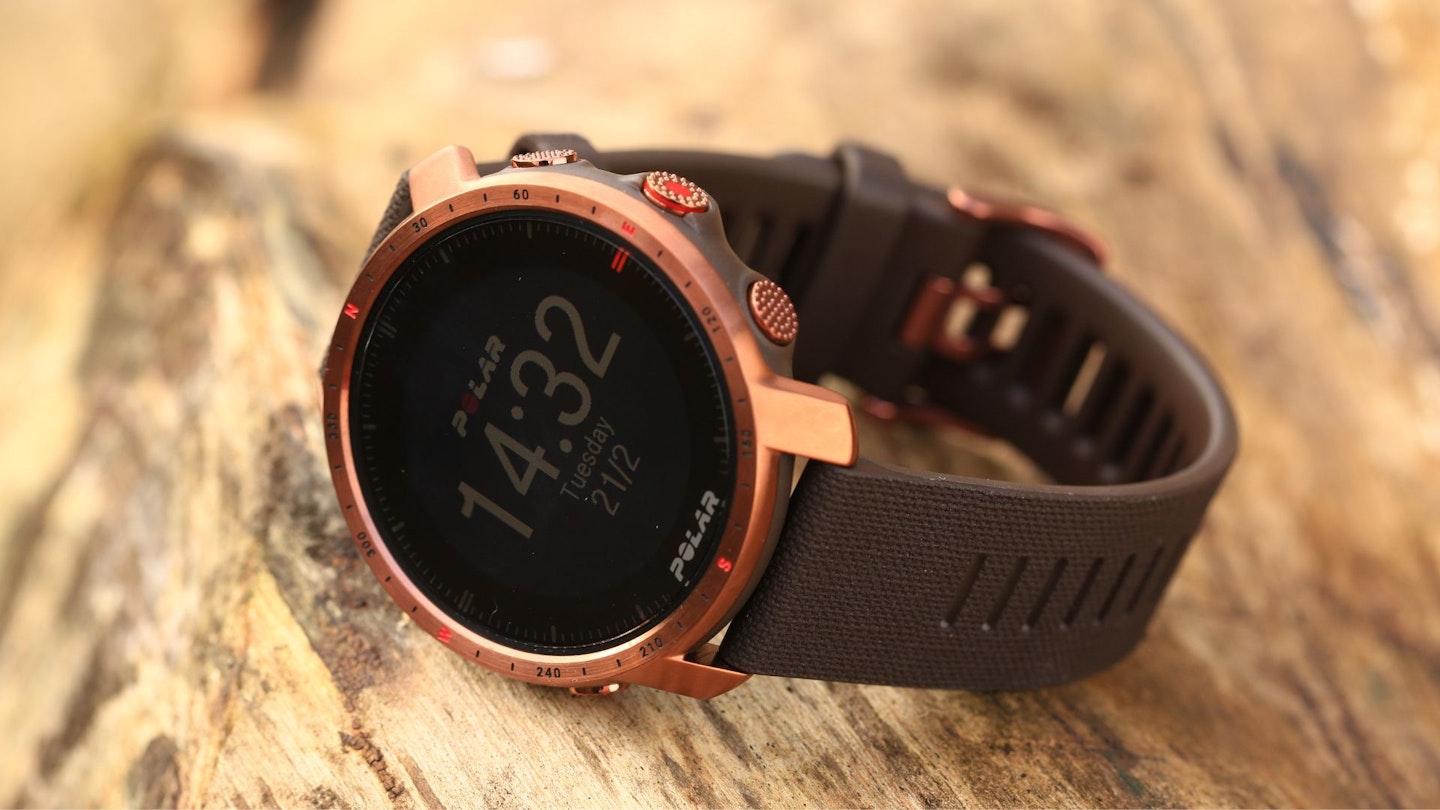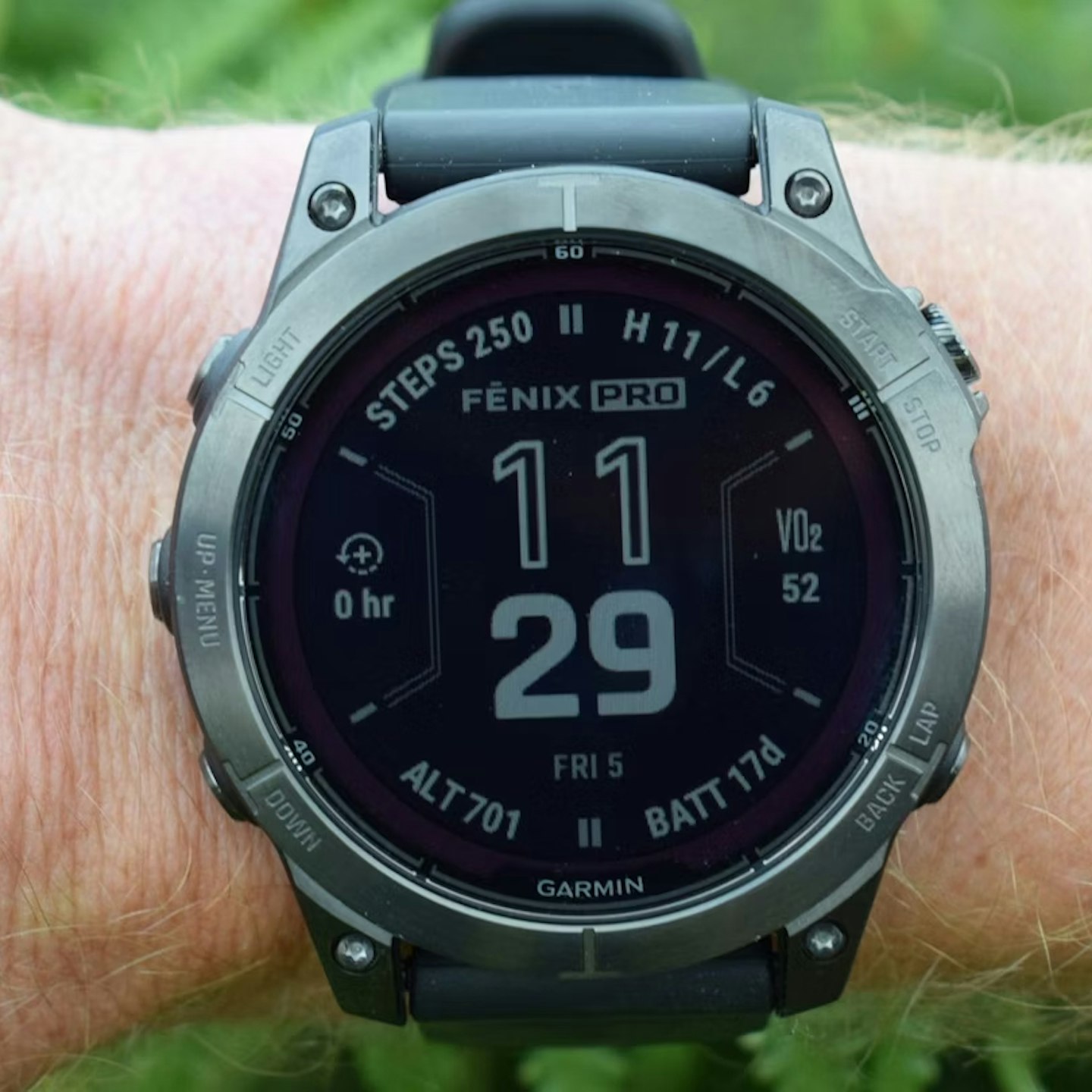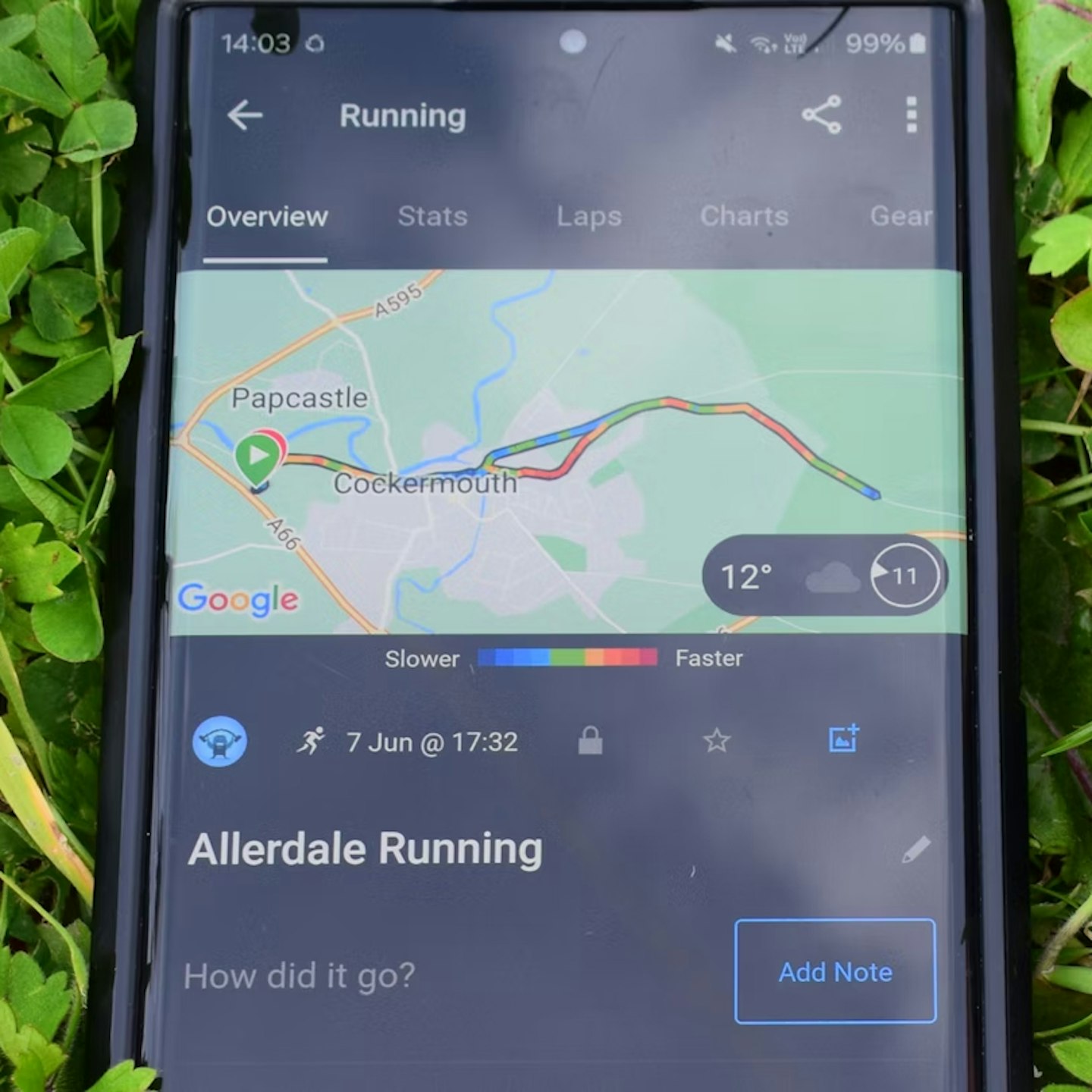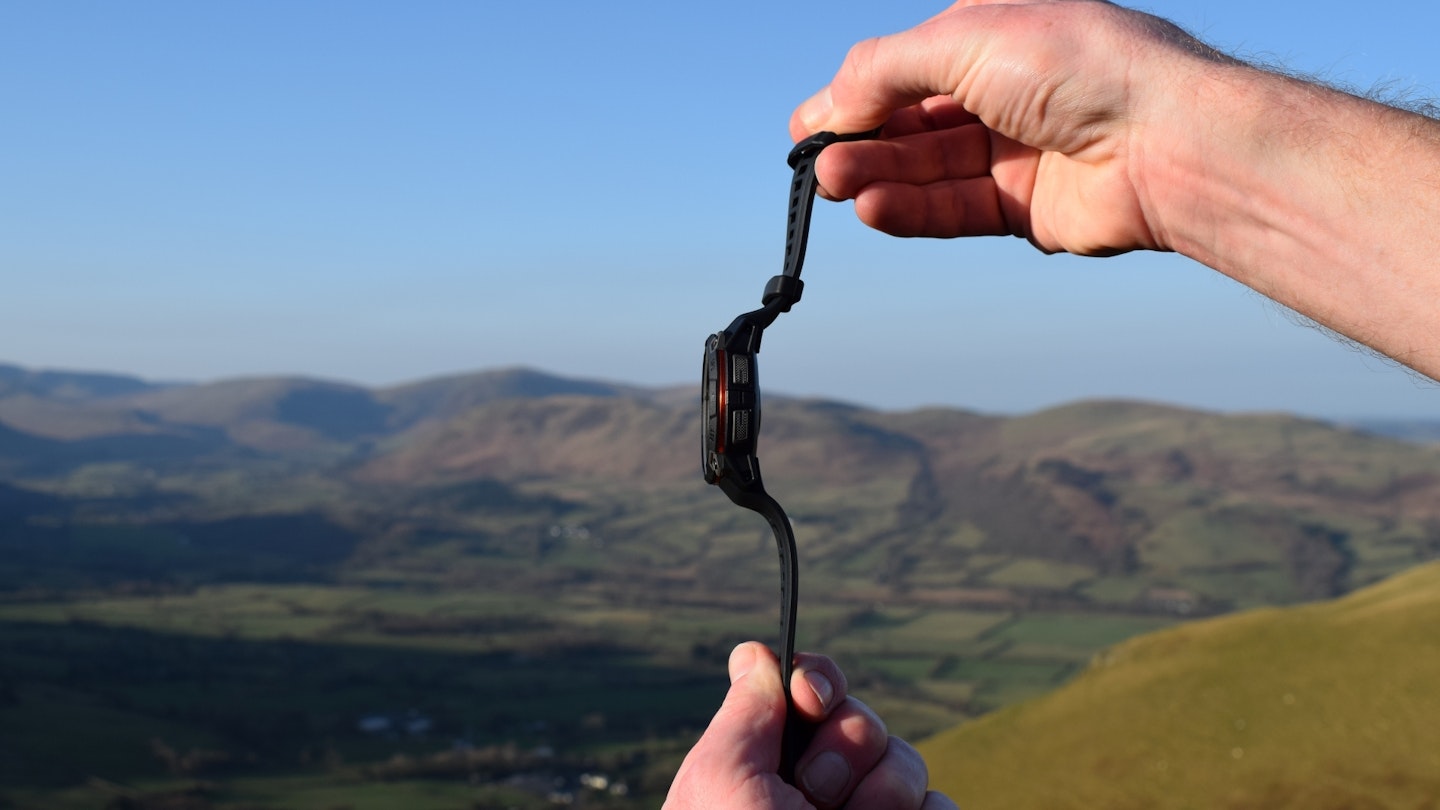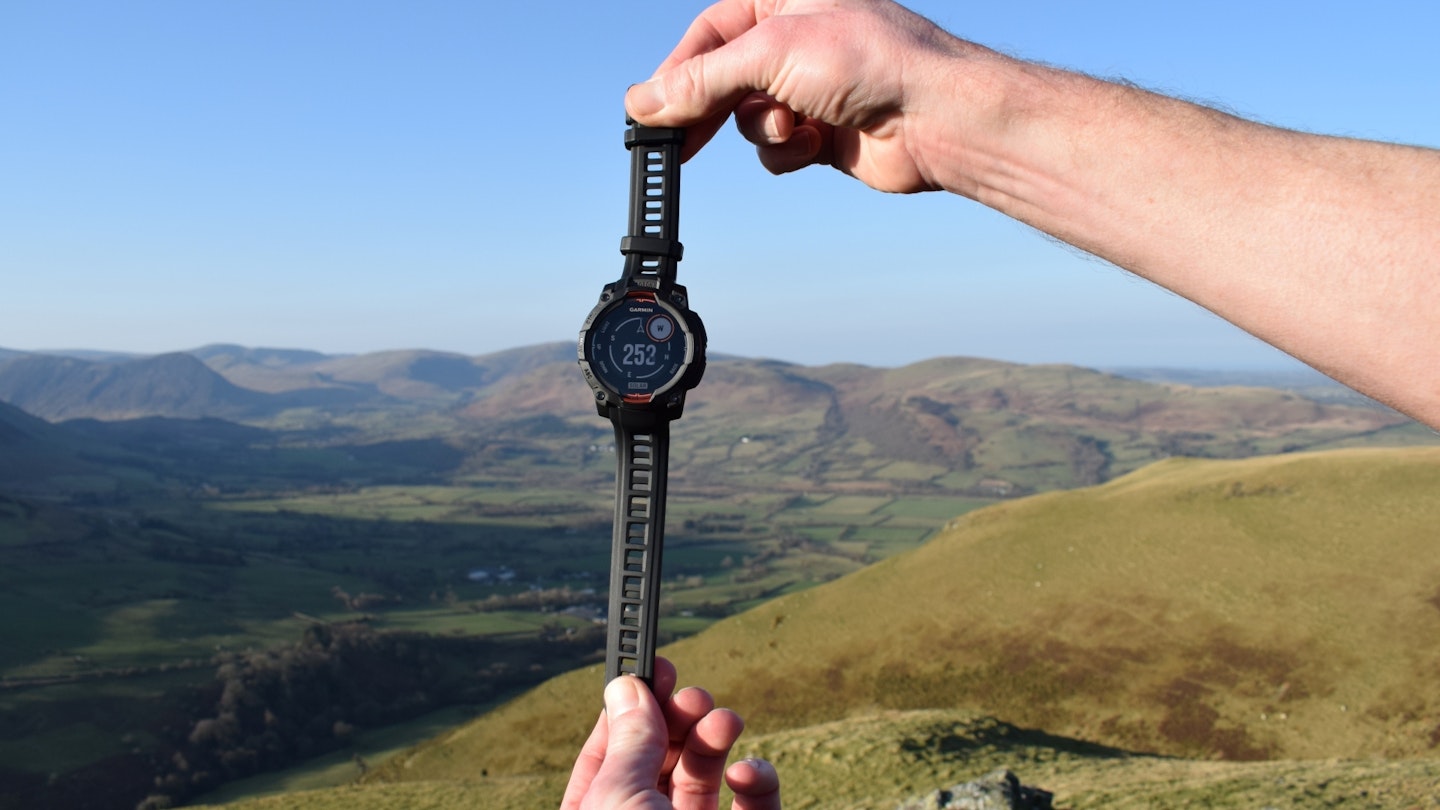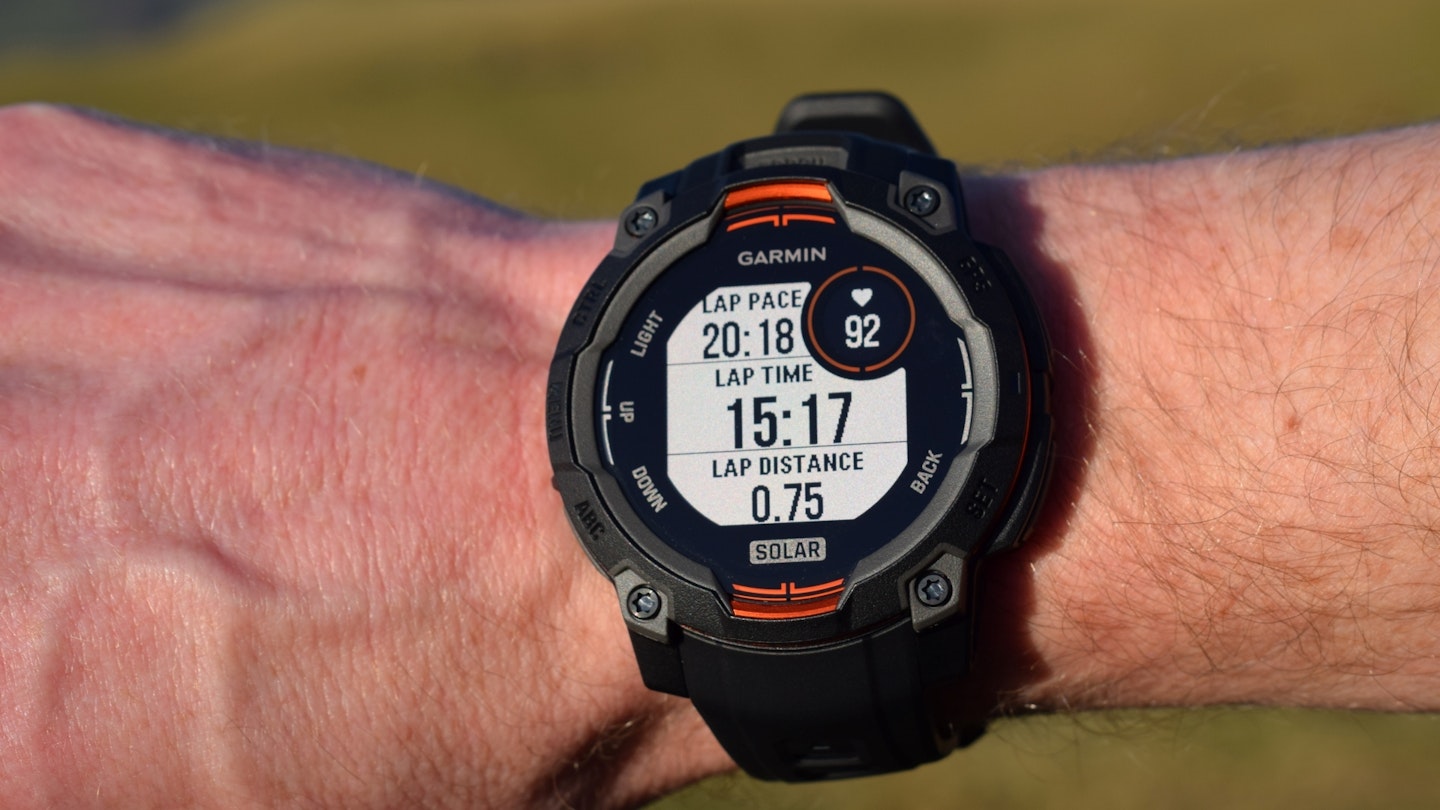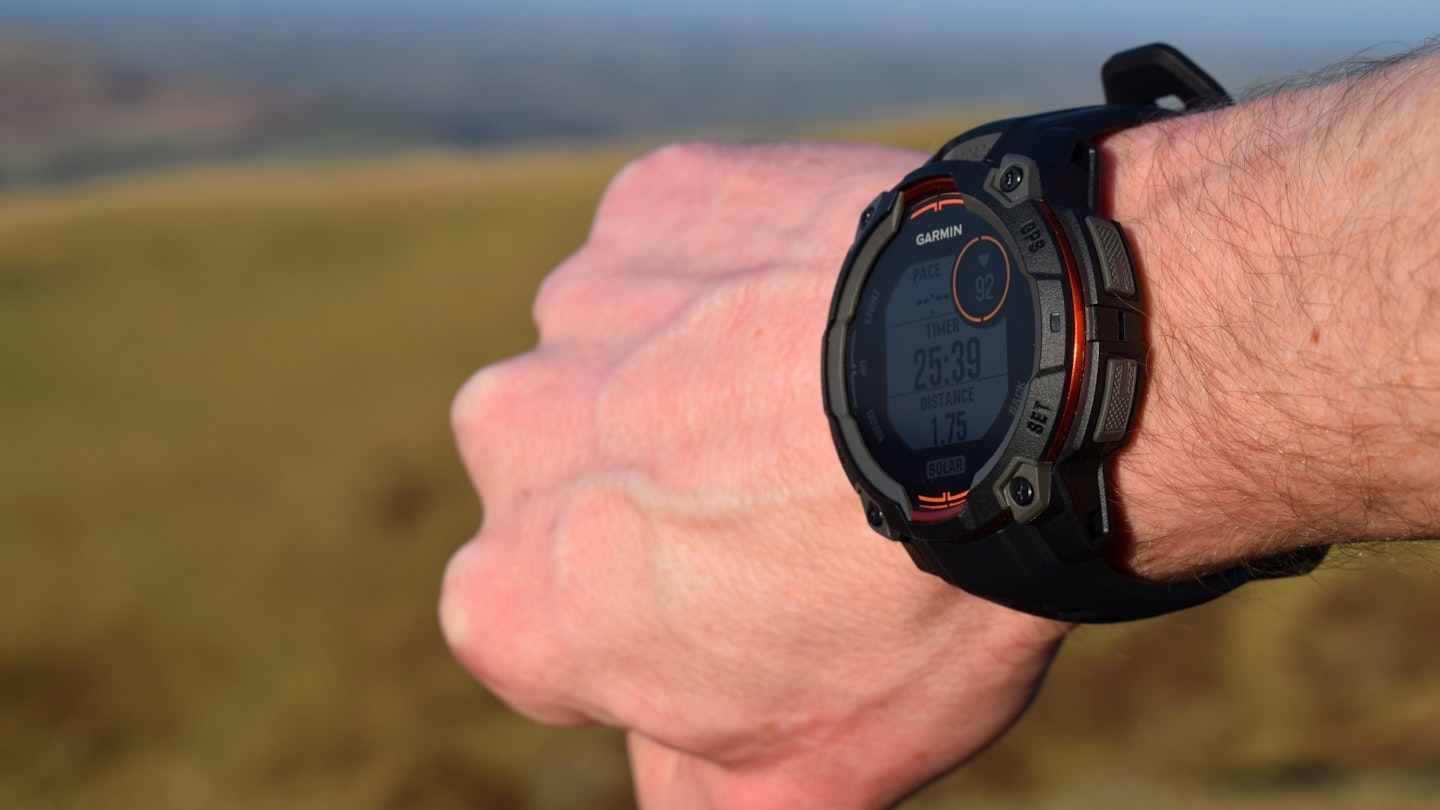For pacing, navigation, fitness stats and so much more, a GPS smartwatch is an essential accessory for every runner – and we’ve tested them to the max. From Garmin, Polar, Suunto and Coros, here are six of the best GPS running watches for 2025.
These days you’ll rarely see a runner without a brightly-screened, high-tech, super-sexy watch on their wrist. Over the past decade or so, the GPS running watch has become the essential accessory for every runner, whether you’re a beginner jogger or hardcore ultra-marathoner.
Why have they been so popular? Well, the obvious answer is that GPS watches are very, very useful to runners. Thanks to the wonders of the global positioning system’s satellite network, which accurately pinpoints your exact location in real time, these watches can track your speed, pace, distance, ascent and heart rate as you run.
For tracking a mountain run, smashing a new PB or competing in an official race, a GPS watch will help you perform at your best.
What are the best GPS running watches of 2025?

Best in test: Garmin Fenix 7 Pro
Best value: Garmin Instinct 2 Solar
Best for beginners: Coros Pace 3
Best for durability: Polar Grit X2 Pro
There is so much more to these watches too. Stat geeks will love all of the scientific info they collect, such as VO2 max and blood oxygen levels, while tech geeks will enjoy social media notifications, Spotify playlists and contactless payments.
For off-grid adventurers, navigation features including breadcrumb trails, GPX integration and offline maps will hit the spot. Or, in other words, a modern GPS watch is a versatile beast that can be many different things to many different runners.
Choosing the right watch for you can be a tricky decision. GPS smartwatches are mega expensive, there’s so much choice out there, and it’s difficult to cut through all of the marketing spin to the crucial details. That’s where we step in. Here’s everything you need to know to pick out a reliable, top-performing GPS watch for all of your running needs.
How we tested the best GPS running watches

Unlike some review websites, which are rather light touch in terms of real-life testing, I can honestly say I have absolutely battered these watches, putting them through their paces on a relentless schedule of road and trail running.
Test runs on the road have included a sub-3hour Manchester Marathon, the ING Night Marathon Luxembourg and a myriad of training runs, 10km races and a host of ParkRuns (including a new sub-18 minute PB).
On the trail, I’ve ticked off several Bob Graham Round recces in the Lake District’s rugged mountains, including the brutal anti-clockwise double-leg from Honister Pass to Dunmail Raise via Wasdale (43.4km, 3,981m ascent), and even ran 111 miles in 28 hours on a non-stop FKT attempt on the Cleveland Way.
Official trail races have included the Keswick Mountain Festival 25km, Lakeland Trail Coniston 15km, and Lakeland Trails 55km Ultra in Ambleside. Other outings have included a four-day fast-hike of the 100km Madeira Island Ultra Trail and a three-day 204km run of the North Downs Way.
Best GPS running watches reviewed:
The latest Garmin Fenix, now in its seventh generation, continues to uphold its reputation as a premium GPS running watch, though not without some caveats. Priced at £739.99, it is significantly more expensive than many competitors, and its weight (75g) might not appeal to all runners. Additionally, the 260 x 260 resolution colour screen, while functional, lacks the vivid clarity of AMOLED displays, which feels disappointing given the price.
Despite these drawbacks, the Fenix 7 Pro offers plenty of positives, making it a worthwhile consideration for serious runners. It excels in battery life, GPS accuracy, navigation, design, and features. During a three-day, 204km run on the North Downs Way, the watch performed flawlessly, particularly impressing with its reliable GPS tracking and navigation capabilities. The titanium bezel and silicone strap add to its durable, well-made feel, and the 1.3” Power Sapphire screen, though not as bright as AMOLED, balances battery life and visibility effectively.
The Fenix 7 Pro includes dual-frequency GPS and uses GPS, GLONASS, and Galileo satellite systems, ensuring accurate tracking across almost any environment. The battery life is remarkable, with up to 40 hours in full GPS mode and significant boosts with solar charging under optimal conditions. The watch is also 10ATM water-resistant, suitable for various water activities. The navigation features, including pre-loaded topographical maps and easy GPX route uploads, worked seamlessly during testing.
In terms of running and fitness features, the Fenix 7 Pro pairs with the Garmin Connect app to provide an extensive array of metrics and training aids, such as Hill Score, Endurance Score, and PacePro technology. These tools can greatly enhance training and performance analysis. Additional features like Spotify integration, Garmin Pay, and a variety of health and wellness trackers add to its versatility, although some, like the in-built LED flashlight and stocks tracker, may seem superfluous.
Overall, while the Garmin Fenix 7 Pro is not without its flaws, its comprehensive feature set and robust performance make it a strong contender for dedicated runners willing to invest in a high-end sports watch. It's earned its way onto our top spot.
Read our full Garmin Fenix 7 Pro review
Pros
- Excellent mapping
- Solid battery life
- All-round performance
- Premium design
- Impressive build quality
Cons
- Very expensive
- Underwhelming screen for the price
- Slightly heavy, chunky shape
| Weight | 75g |
| Battery life | Up to 57 hours |
| Waterproof | 10ATM |
| Materials | Power sapphire |
| Screen size | 260 x 260 pixels, 1.3” |
The Garmin Instinct 2 Solar stands out as a versatile outdoor smartwatch, perfect for adventurers engaging in a variety of sports. It's robust, lightweight (at just 54g), and compact, making it ideal for activities from hiking and climbing to running and kayaking. While it doesn't cater specifically to hardcore runners, it excels as an all-around outdoor watch. Priced under £300, it offers good value, positioning itself at the premium end of the entry-level market. Its design is rugged yet protective, ensuring a comfortable fit and solid performance in GPS accuracy and battery life. However, the small (0.9”), monochrome screen is basic and might disappoint those expecting more for the price. Despite this, the Instinct 2 Solar's simplicity might appeal to users who prefer straightforward functionality without unnecessary features.
In terms of design, the watch's military-inspired look is both tough and practical. It features a bombproof polymer case and scratch-resistant Corning Gorilla Glass, suggesting it could withstand significant wear and tear. The five-button interface makes navigation easy, although some may find it outdated compared to more high-tech alternatives. Despite its compact size, the watch holds up well during activities, providing a slip-free fit even at high speeds. The screen, though small and monochrome, is battery efficient and offers decent visibility in various lighting conditions, focusing on essential stats rather than overwhelming the user with information.
When it comes to GPS accuracy, the Instinct 2 Solar performs reliably, tracking runs accurately without signal issues. It uses GPS, GLONASS, and Galileo, covering most needs despite lacking access to QZSS or Beidou satellite systems and dual-frequency GPS. These omissions might affect accuracy in dense urban or forested areas, but overall, the tracking is precise. Battery life is another strong point, with up to 30 hours in full GPS mode, which is adequate for most ultra-length runs and adventures. The solar charging feature, while somewhat gimmicky in less sunny climates, can extend battery life under optimal conditions.
The watch also boasts a 10ATM water resistance rating, suitable for swimming and other water activities. Its navigation features, though basic, include trackback routing, altimeter, barometer, and compass, which are useful for outdoor enthusiasts. For runners, the Garmin PacePro feature allows for customized pace targets based on distance and elevation, aiding in performance optimisation. The Garmin Connect app enhances the overall experience, providing detailed data and insights, while built-in sports apps offer various workout options. Despite some shortcomings, the Garmin Instinct 2 Solar remains a solid choice for those seeking a durable, reliable outdoor smartwatch.
Read our full Garmin Instinct 2 Solar review
Pros
- Affordable
- Super-rugged
- Durable
- Lightweight
- Versatile
Cons
- Poor screen
- No dual band frequency
- No onboard music
- No topographical maps
- Monochrome only
| Battery life (smartwatch mode) | Up to 28 days |
| Battery life (GPS) | Up to 30 hours |
| Display type and size | Corning Gorilla Glass, 176 x 176 resolution, 0.9” |
| Weight | 54g |
| Waterproof rating | 10ATM |
Surprise! We've also just tested out the next in the Instinct series - but we're keeping the Instinct 2 in this list because it is excellent value - especially right now.
The Garmin Instinct 3 Solar builds on the foundation set by the Instinct 2 Solar, offering a robust, lightweight option for outdoor adventurers, priced at £349.99. It’s an ideal choice for anyone who needs a durable sports watch for activities like hiking, trail running, and kayaking, but its improvements set it apart from its predecessor in meaningful ways.
While the Instinct 2 Solar was already a solid all-rounder with good GPS accuracy and a rugged build, the Instinct 3 Solar brings several notable upgrades. First, the GPS performance has improved, now featuring multi-band GPS for better accuracy in challenging environments, compared to the more basic GPS, GLONASS, and Galileo setup on the Instinct 2. This makes the Instinct 3 more reliable in dense forests or urban areas, addressing one of the key weaknesses of the Instinct 2.
The design remains largely the same: the lightweight 52g frame is incredibly comfortable, and the 23mm monochrome screen is still basic, but more efficient. However, the Instinct 3 Solar takes a significant step forward with solar charging, allowing for up to 130 hours of GPS usage, which is a massive leap from the 30 hours offered by the Instinct 2 in full GPS mode.
Despite these improvements, the Instinct 3 Solar still keeps things simple – there are no AMOLED displays or high-end maps like those found on the Garmin Fenix 7 Pro or Polar Grit X2 Pro. If you’re looking for premium navigation features or a more vivid display, those models may be a better fit.
However, for a rugged, lightweight, and reliable outdoor watch with excellent battery life, the Instinct 3 Solar is an excellent choice, especially for users who loved the Instinct 2 but want enhanced GPS accuracy and extended battery life.
Read our full Garmin Instinct 3 Solar review
Pros
- Well-priced
- Very robust and muscular, yet ultralight
- Simple but practical
- Versatile
- Good for multi-sports
- Dual-band GPS frequency
Cons
- No QZSS or Beidou
- No onboard music
- No topographical maps
- Screen doesn't support touch and is monochrome only
- Upgrades for Instinct 3 are not game-changing
| RRP: | £349.99 / $399.99 |
| Battery life (smartwatch mode): | Up to 28 days |
| Battery life (GPS): | Up to 40 hours |
| Display type and size: | Power Glass, 176 x 176 resolution, 23mm (0.9”) |
| Weight: | 52g / 1.8oz |
| Waterproof rating: | 10ATM |
The Coros Pace 3 stands out as an excellent entry-level smartwatch, offering great value at just £219. Its featherlight 39g weight is brilliant for all-day comfort, making this an ideal choice for runners who prefer a sleek and slimline design. Despite its budget-friendly price, the Pace 3 has a few proper high-end features like dual-band GPS, an improved heart rate sensor, and an accompanying app that delivers in-depth data metrics. The battery life is commendable, offering 38 hours with full GPS – particularly impressive for such a lightweight device.
However, the Pace 3 does also have some notable drawbacks. The screen, while functional, is quite basic, with dull, dated graphics. The build quality feels cheap compared to most other smartwatches; the body has a plasticky feel and a flimsy crown button. Additionally, premium features like contactless payments are missing, and the user interface could benefit from an upgrade. Despite these cons, the watch delivers on essential aspects, providing solid battery life, accurate tracking, and high comfort levels.
In terms of GPS accuracy, the Pace 3 performs remarkably well. We tested it on various runs, including the Lakeland Trails Coniston race, and found it reliably accurate thanks to its dual-frequency GPS and access to all major satellite networks. The watch’s minimalist design, with a 1.2” screen and scaled-back bezel dimensions, ensures it stays stable on the wrist during dynamic movements. Ideal for people who can't get on with chunky sport watches.
For those who prioritise navigation, the Pace 3 offers basic but functional options. While the navigation feature lacks detailed maps, it works well for simple route following. The fitness data and training features are where the Pace 3 truly shines, with the Coros app providing a wealth of information and customisable training plans. Although the absence of onboard music storage might be a minor inconvenience, the watch still supports MP3 downloads for anyone who still remembers how to do that. Overall, the Coros Pace 3 is a fantastic option for runners seeking a no-nonsense, affordable running watch with essential features and excellent performance.
Read our full Coros Pace 3 review
Pros
- Superb price
- Very comfortable
- Ultralight
- Solid battery
- Accurate tracking
Cons
- Poor screen
- Dated user interface
- Plasticky-feel
- Cheap build quality
- Not the most powerful battery
| Weight | 39g |
| Battery life | Up to 38 hours in GPS mode, 17 days without GPS mode |
| Waterproof | 5ATM |
| Materials | Mineral glass, 240 x 240 resolution |
| Screen size | 1.2” |
The Polar Grit X2 Pro might polarise (sorry) opinions, but we've landed firmly on the side who give this watch two thumbs up. With a 1.39” AMOLED screen that outshines top competitors like the Garmin Fenix 7 Pro, its visuals are truly top tier. The integration with Komoot for mapping and routes makes navigation straightforward, and the military-grade design ensures durability for hardcore users. Our testing experience was generally very positive – we love the intuitive app, solid battery life, and detailed maps.
However, the watch comes with a few drawbacks. There's no getting around the fact that it's wildly expensive, even compared to other top-end options like the Suunto Race. Weighing 79g, the Grit X2 Pro is bulky and can be uncomfortable during intense activities. While it excels in trekking, hiking, and general outdoor adventures, it is slightly less ideal for trail running.
Despite these negatives, the Polar Grit X2 Pro stands out among the crowd for its unrivalled mapping features, making it a versatile option for trail runners who also engage in other outdoor activities. You can easily ping any saved routes on Komoot directly to the watch, and it'll even upload your runs to Strava for you! The screen, while excellent, drains the battery fairly fast, which might be a concern for long, multi-day expeditions. The GPS accuracy is reliable, supported by dual-frequency service and access to all major satellite networks.
The watch's chunky design may deter some users, especially those with smaller wrists or those who prioritise a lightweight feel for running. The battery life is decent, and it survived a six-day trip to Madeira, although the accuracy of the GPS was slightly compromised at longer intervals. Additional features include water resistance up to 100 meters, multiple sports modes, and health tracking, but the lack of onboard music storage and contactless payment is notable given the high price.
Overall, the Polar Grit X2 Pro is a high-end smartwatch with excellent features and bomb proof durability. It's a great pick if you want an absolute powerhouse of a watch – provided you can overlook its cost.
Read our full Polar Grit X2 Pro review
Pros
- Borderline indestructible design
- Superb AMOLED screen
- Excellent mapping with Komoot integration
- Great waterproof rating
Cons
- Fairly chunky on the wrist
- Has more hiking functionality than running
- No contactless payments or music storage
| Battery life (smartwatch mode) | Up to 10 days |
| Battery life (GPS) | Up to 43 hours |
| Display type and size | AMOLED, 454 x 454 resolution, 1.39” |
| Weight | 79g (with silicone band) |
| Waterproof rating | 10ATM |
The Vertix 2S is Coros's top level sports watch. Priced at £599, it offers notable value compared to some competitors on this list – though it still isn't cheap. As an upgrade to the Vertix 2, it boasts improved GPS accuracy through a new antenna and multi-band GPS, and a new optical heart rate sensor. However, the updates are incremental, and we anticipate more significant changes with the Vertix 3. The Vertix 2S positions itself against high-end models like the Garmin Fenix 7 Pro, offering premium features such as a titanium bezel and sapphire glass screen at a lower price, saving consumers £141 compared to the Fenix, and well over £200 compared to the Polar Grit X2.
Like its previous model, the Vertix 2S eschews an AMOLED screen for a transflective memory-in-pixel (MIP) display, prioritising battery life over display clarity. This choice benefits ultra runners who need longer battery performance rather than vivid screens. The Coros Vertix 2S is robust, with an easy-to-use interface, large 1.4” display, and impressive battery life, making it a strong contender in our group test. However, it has its drawbacks: at 88g with the silicone band, it's relatively heavy and somewhat uncomfortable for prolonged wear. The new heart rate sensor is less reliable than a chest strap, and the screen can appear dull compared to AMOLED displays. Coros's music system is also pretty lacklustre.
Design-wise, the Vertix 2S features a titanium bezel, sapphire glass screen, and two interchangeable straps (silicone and nylon). S witching to the nylon band reduces the weight to a more manageable 70g. The dual-frequency GPS system enhances accuracy, locking onto signals quickly and maintaining precise tracking. The Vertix 2S really shines in battery performance, offering up to 118 hours of standard GPS tracking and 40 days of regular use. This surpasses most other options on this list. The watch is also water-resistant up to 10ATM, suitable for swimming.
The navigation and mapping features are user-friendly, despite lacking some of the clarity and detail found in Garmin maps. The Coros app is straightforward and provides useful training insights without overwhelming users. While it lacks contactless payments and streaming music integration, the Vertix 2S offers extensive activity modes, training plans, and unique features like storm alerts and altitude sickness warnings. Overall, the Coros Vertix 2S is a solid option, particularly for those seeking a durable watch with exceptional battery life at a competitive price.
Read our full Coros Vertix 2S review
Pros
- Superb price for a titanium watch
- Exceptional battery life
- Accurate GPS tracking
- Solid all-round performance
Cons
- Quite heavy (for a running watch)
- Chunky design
- Screen can be hard to read in high sunlight
| Battery life (smartwatch mode) | Up to 40 days |
| Battery life (GPS) | Up to 118 hours |
| Display type and size | Sapphire glass, 280 x 280 resolution, 1.4" |
| Weight | 88g (with silicone band), 70g (with nylon band) |
| Waterproof rating | 10ATM |
We used the Suunto Race over a non-stop 28-hour, 110.8-mile run on the Cleveland Way national trail, and it endured the ultra with flying colours. Utilising the “Ultra” GPS mode, the watch accurately tracked the challenging route and retained 65% battery life at the end, a testament to its exceptional battery performance. With a large 1.43” AMOLED screen that is both crisp and bright, the Suunto Race is a premium offering at a relatively low price of £389, undercutting higher-end competitors by several hundred pounds.
However, at 83g, the watch is notably heavy and has a chunky design, which may feel cumbersome for those with a dynamic arm swing or a preference for lighter gear. Despite this, the watch’s user interface is intuitive, featuring an easy-to-navigate “Control Panel” and adjustable battery power modes that cater to various activity levels. The dual-frequency GPS chipset connects to 32 satellites from multiple systems, providing accurate tracking even in challenging terrains, as demonstrated during the Cleveland Way run.
The Suunto Race has a 10ATM water-resistance rating, making it suitable for swimming and other aquatic activities. Its navigation features, including GPX route uploads, turn-by-turn notifications, and an in-built compass and altimeter, enhance its utility for proper mountain expeditions. The watch also offers comprehensive training and coaching features through the Suunto app, delivering a wealth of scientific data and personalised intensity zones to optimise workouts.
Despite the lack of direct music downloads and contactless payments, the Suunto Race covers most other essential features, such as customisable watch faces, lifestyle metrics, and smartphone notifications. Its standout screen, remarkable battery life, and accurate GPS tracking make it a strong contender for serious runners and outdoor enthusiasts, provided they can manage its bulkier build.
Read our full Suunto Race review
Pros
- Superb AMOLED screen
- Excellent battery life
- Impressive price
- GPS accuracy
Cons
- Heavy
- Thick and chunky on the wrist
- No onboard music
- No contactless payments
| Weight | 83g |
| Battery life | Up to 50 hours (performance mode) or 200 hours (tour mode). Or 26 whole days without GPS or heart rate. <br> |
| Waterproof | 10ATM |
| Materials | Stainless Steel |
| Screen size | AMOLED, 466x466 resolution, 1.43” |
The ELEMNT Rival is currently Wahoo’s sole sports watch, marketed as a simplified performance GPS watch, which is refreshingly appealing in a market flooded with feature-laden devices. Many multisport and GPS watches pack in numerous features, driving up the price and often including sports and functions that users rarely use. The ELEMNT Rival, however, aims to be a 'radically simplified' multisport watch, offering an attractive price point.
Designed primarily as a triathlon watch, the ELEMNT Rival focuses on running, cycling, and swimming, with a few additional sports modes like strength training and yoga. A standout feature is the Touchless Transition, which automatically transitions between swim, bike, and run stages, requiring interaction only at the start and end of a race or training session. It integrates seamlessly with other Wahoo gear like bike computers and heart rate monitors and is compatible with third-party apps such as Strava. We found the watch to be lightweight at 53g, though slightly larger than competitors, with a durable build including a silicone strap, Gorilla Glass lens, and ceramic bezel.
In terms of performance, the ELEMNT Rival doesn’t match the premium feel of pricier models from Garmin, Coros, and Suunto but remains functional and reliable. It’s comfortable to wear, though a bit chunky, and offers solid activity logging and location tracking using GPS and GLONASS satellites. While it lacks the advanced GNSS support of higher-end watches, it performs well for everyday runs and trails, albeit with slower initial location locking. However, the battery life is mediocre; in GPS mode, it lasts about 24 hours, requiring frequent recharges for active users.
Ultimately, the Wahoo ELEMNT Rival is a good GPS sports watch, particularly for those already in the Wahoo ecosystem or looking for a straightforward, focused device. Its track-and-report approach may appeal to some, but it lacks versatility for activities like hiking, skiing, or climbing, limiting its appeal to a broader audience. While it’s accurate, durable, and comfortable, the short battery life and lack of diverse sport modes might drive enthusiasts toward more versatile options.
Read our full Wahoo ELEMNT Rival review
Pros
- Refreshingly straightforward
- Great for those focused on triathlon sports
- Accurate tracking and metrics
Cons
- Not a particularly versatile sports watch
- Short battery life
| Dimensions | 46.5 x 46.5 x 15.3mm |
| Weight | 53g |
| Display | 1.2-inch |
| Materials | Ceramic bezel, Gorilla Glass lens, silicone strap |
| Battery life | Up to 14 days (smartwatch mode), 24 hours using GPS |
Here's a pro tip – when a new version of any piece of gear comes out, the price of its predecessor will dip. The Grit X2 is certainly an upgrade, but we're still big fans of the original Polar Grit X Pro.
So often the heart rate monitor of choice, trail runners might even be a bit surprised to learn that the Grit X is definitely a mean competitor when it comes to offering all the extra bits we need, like mapping, speed, elevation and the zillion things GPS watches supply these days.
It’s difficult to pinpoint any one function, such is the huge array on offer. Obviously, given the watch’s heritage, the Precision Prime mode which tracks your heart rate directly from the wrist is pretty cool, but then so is FitSpark, which provides ready-made daily workouts that match your recovery, readiness and training history.
Don’t forget to put it into Nightly Recharge when it comes to bedtime, not to charge it but rather to measure your recovery as you slumber and tell you how well you recover from the demands of your day.Then, it’ll supply you with personalised daily tips on exercise, sleep and regulating your energy levels on those particularly rough days.
We were particularly drawn to the Hill Splitter feature which automatically detects uphill and downhill segments and delivers detailed ascent/descent performance reporting after each session. Using these insights, we can understand the intensity of our training, learn how to pace our efforts at different stages, compare sessions, and execute structured workouts.
More? How about Polar’s ability to track the power you generate on a run? Or there’s a great turn-by-turn navigation feature using Komoot’s mapping to make sure you never get lost. It even tells you what the weather will be.
Read our full Polar Grit X Pro review
Pros
- Great trail running mode
- Route navigation and profiles
- Durable and long-lasting
- Training feedback and advice
- Wellbeing biodata tracking
Cons
- Bulky design
| Dimensions | 47mm wide x 47mm high x 13mm thick |
| Weight | 79g with wristband |
| Display | 1.2 inch, 240x240 resolution |
| Materials | Plastic case, sapphire screen glass, stainless steel bezel |
| Battery Life | 346mAh; 7 days or 40h with HR and GPS on |
How to choose a running watch: key features

Screen size and type
GPS running watches vary in size, commonly measured by the width of the screen, often from about 20mm to 50mm. A wider screen will display information better and more clearly, whereas a smaller screen will be more battery efficient and feel lighter and comfier on the wrist. Some watches feature super-bright, HD screens with AMOLED technology, while others have very basic, monochrome screens. The former are far superior, but use a lot of battery power. All modern GPS running watches enable you to customise your data screens, so you’re only viewing the metrics you care about as you run.
GPS accuracy

This is the cornerstone of any running watch – naturally you’ll want your mileage, pace and ascent to track correctly. For maximum accuracy choose a watch that can connect to multiple satellite networks such as GPS, GLONASS, Galileo, Beidou and QZSS.
Weight
Some watches are thin, streamlined and lightweight; others are thick, chunky and on the heavy side. The heavier the watch, the more likely it’ll feel cumbersome, unstable and “bouncy” on your wrist. But, of course, if it’s too lightweight, it probably won’t have much tech or functionality.
Based on our research, we’d suggest 40-50g is an excellent target for an ultralight, minimalist watch; whereas a fully-featured, chunky smartwatch is likely to weigh from 70-90g.
Battery life
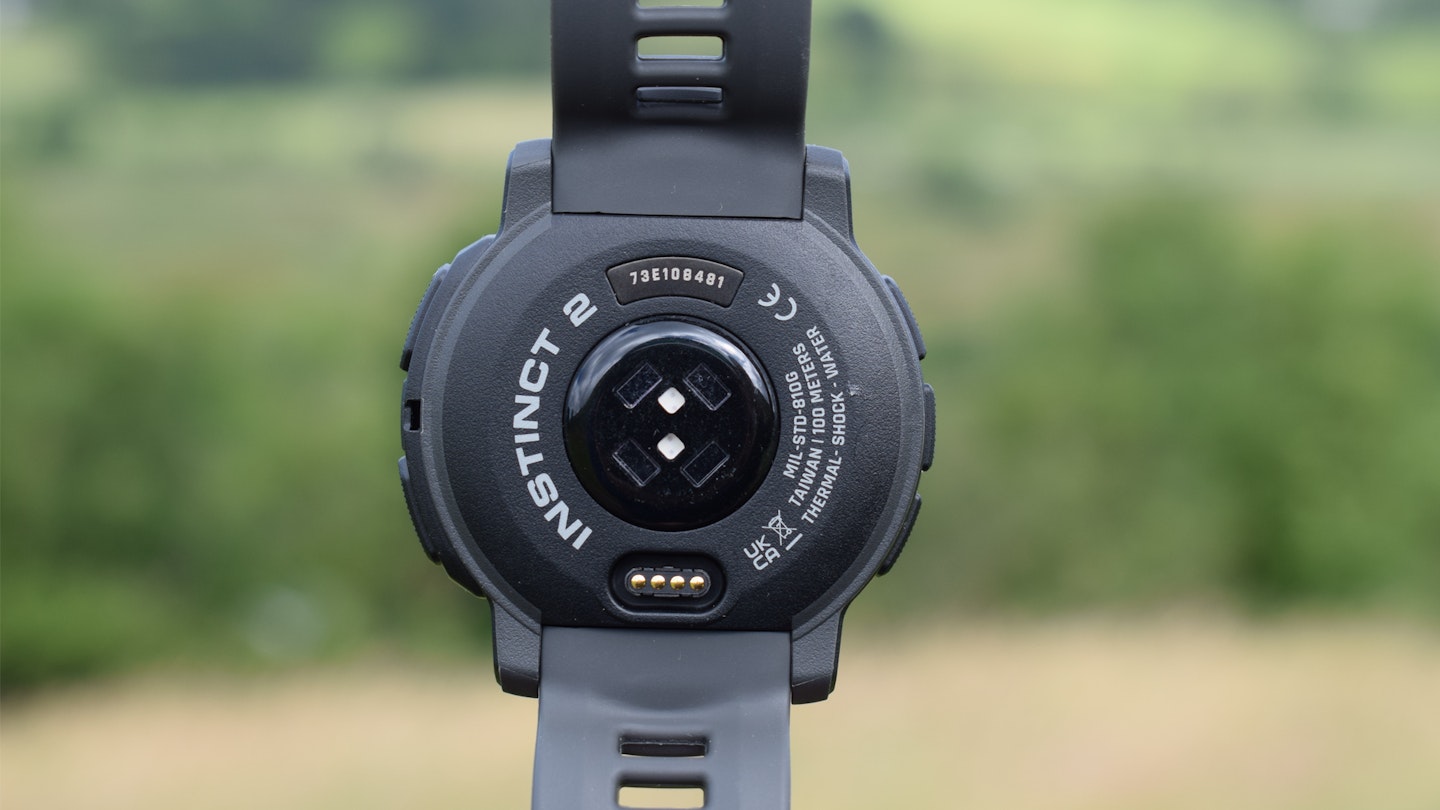
This is often a key consideration. Most brands tend to quote battery life performance in various modes – with or without GPS enabled, for example – but these official stats should be taken with a pinch of salt. You won’t always get the maximum out of your watch’s battery. A good guide is to aim for a watch with battery life beyond your maximum run length, thus you’ll always be safe.
Many watches have several power modes, enabling you to eke out battery life longer when running an ultra (although the compromise is that GPS accuracy will be lessened slightly). These days, unless you’re running exceptionally long distances, many of the best GPS watches have batteries that will see you through to the finish line. Some watches feature solar charging, which can help a little, but in the rainy UK we’d suggest this feature is not that important.
Water-resistance

All GPS running watches should be capable of withstanding a torrential downpour in the mountains, but some watches are fully waterproof and can be used for swimming. Look out for information on a watch’s ATM rating and the underwater depth it can be used to.
Coaching and training
Many GPS running watches have built-in coaching features, advising you on things like recovery times, pacing, training plans and the like. Some runners find these very useful; others never use them at all, finding the AI-generated information too generic.
Running performance
Modern GPS running watches can do so much to help you set new personal bests and improve your all-round performance. Features such as a grade-adjusted pacing notifications, cadence measurements and lap settings can help runners hit their targets. The more serious you are as a runner, the more important these features will be.
Heart rate tracking
Almost all GPS running watches feature an in-built heart rate monitor, which will provide useful insight into how hard you are working and when you reach thresholds. Many watches can also be synced with a heart rate chest strap for more accurate tracking than via your wrist.
Navigation and mapping

GPS running watches are not commonly used for detailed navigational tasks – your phone will be far better for this. However, many watches are capable of performing basic navigation, including tracking your position on a basic topographic map, tracking a breadcrumb trail and keeping you on-track with turn-by-turn notifications. Some watches enable you to upload a GPX to follow, while others can be used with mapping apps such as Komoot. Good navigation watches will also provide accurate grid references, a compass and altitude above sea level via an in-built altimeter.
Accompanying apps

Each brand featured in this round-up has a smartphone app linked to its watch. These apps are commonly used to set-up watches, alter settings and install firmware updates, as well as view and analyse your training stats such as the distance run in a week.
Multi-sports modes
In this article we’re focused on running, but most watches can be used to track all of your exercise activities, from skiing and swimming to cycling and hiking.
Lifestyle features
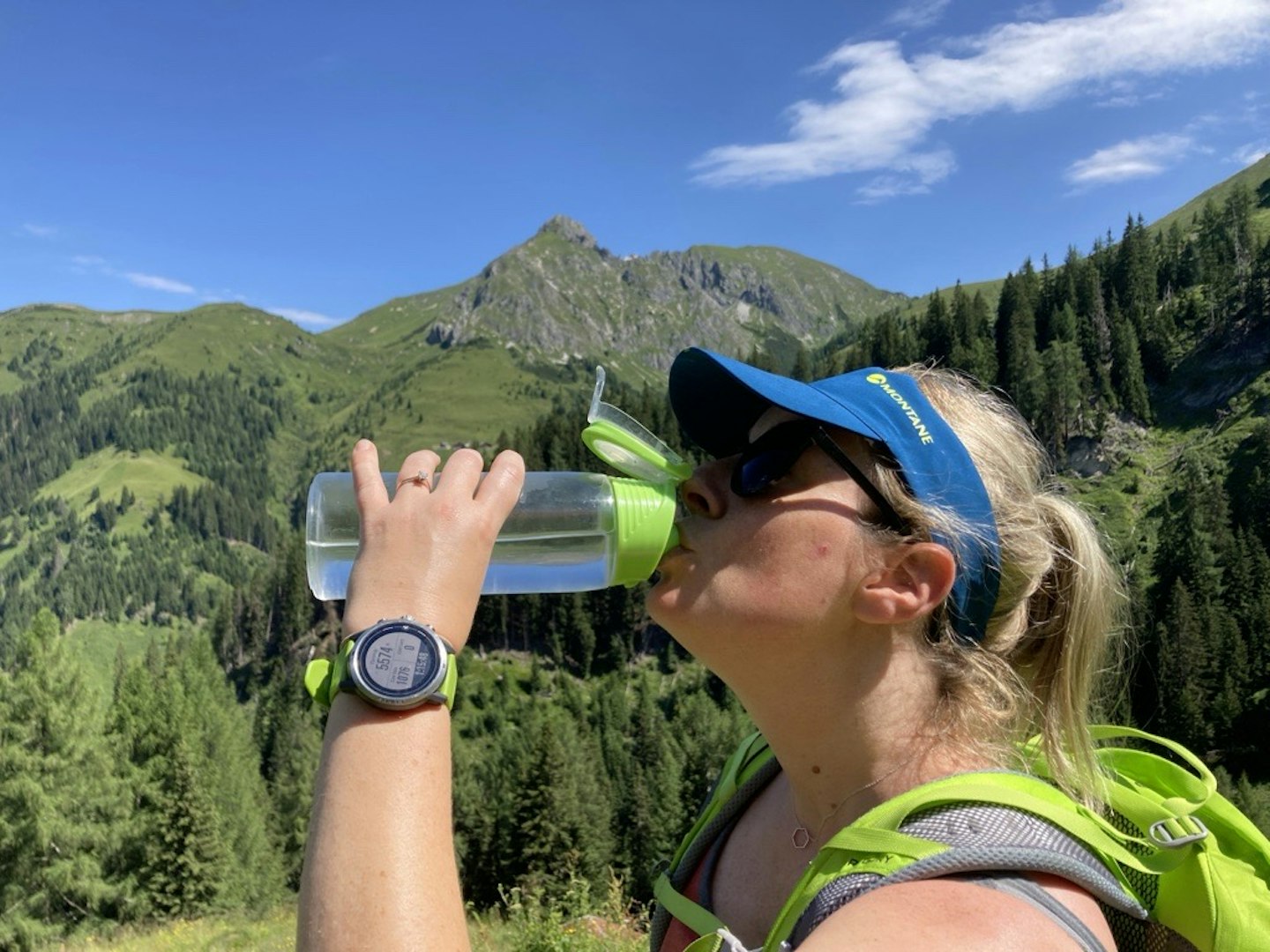
Some watches can be used for contactless payments, offline music playlists (with Spotify), phone calls and social media notifications. If you want these features, check that they are available. Almost all modern GPS running watches will track information such as daily step counts, calories burnt, stress levels and even a sleep monitor, which tracks both the length and quality of your sleep. Most of these features, however, are not particularly scientifically validated or accurate, so they’re not that useful.
How to choose a running watch: FAQs

What is the most accurate GPS for running?
This comes down to the technical specifications of your smartwatch and how it interacts with GPS satellites flying 12,000m above earth. There are five core satellite navigation systems in the world: GPS (United States), GLONASS (Russian Federation), Beidou (China), Galileo (European Union) and QZSS (Japan). Some watches only connect to one or a few of these systems, which means there are less satellites to ping off; more expensive pairs connect to all of the satellite networks. The more satellites your watch can communicate with, the more accurate it will be. If accuracy is your number one priority, choose a watch such as the Suunto Race which can connect all five satellite networks.
Another important factor in GPS accuracy is the use of a dual-frequency (multi-band) system. This system uses multiple frequency bands and ensures “more consistent tracklogs and improved positioning when using the device in challenging environments”, as Garmin explains. This means “the receiver tracks more than one radio signal from each satellite on different frequencies, which can reduce errors caused by environmental interference” such as tress, mountains and buildings.
But it’s worth remembering that all GPS watches have limitations. They can never be 100% accurate and there will always be little anomalies with tracking, particularly if you run through tree cover or hit a satellite blackspot momentarily. This means your run may track short or long. This is commonly noticed on an official race when your watch tracks over or under the official distance. We noticed it too on several of our training runs, when we wore two or three watches at the same time, only for the distance to track slightly differently on each watch. As such, it’s best to use a GPS running watch’s data as an insightful guide, but always remember that it can never be 100% accurate.
Is there a watch better than Garmin?
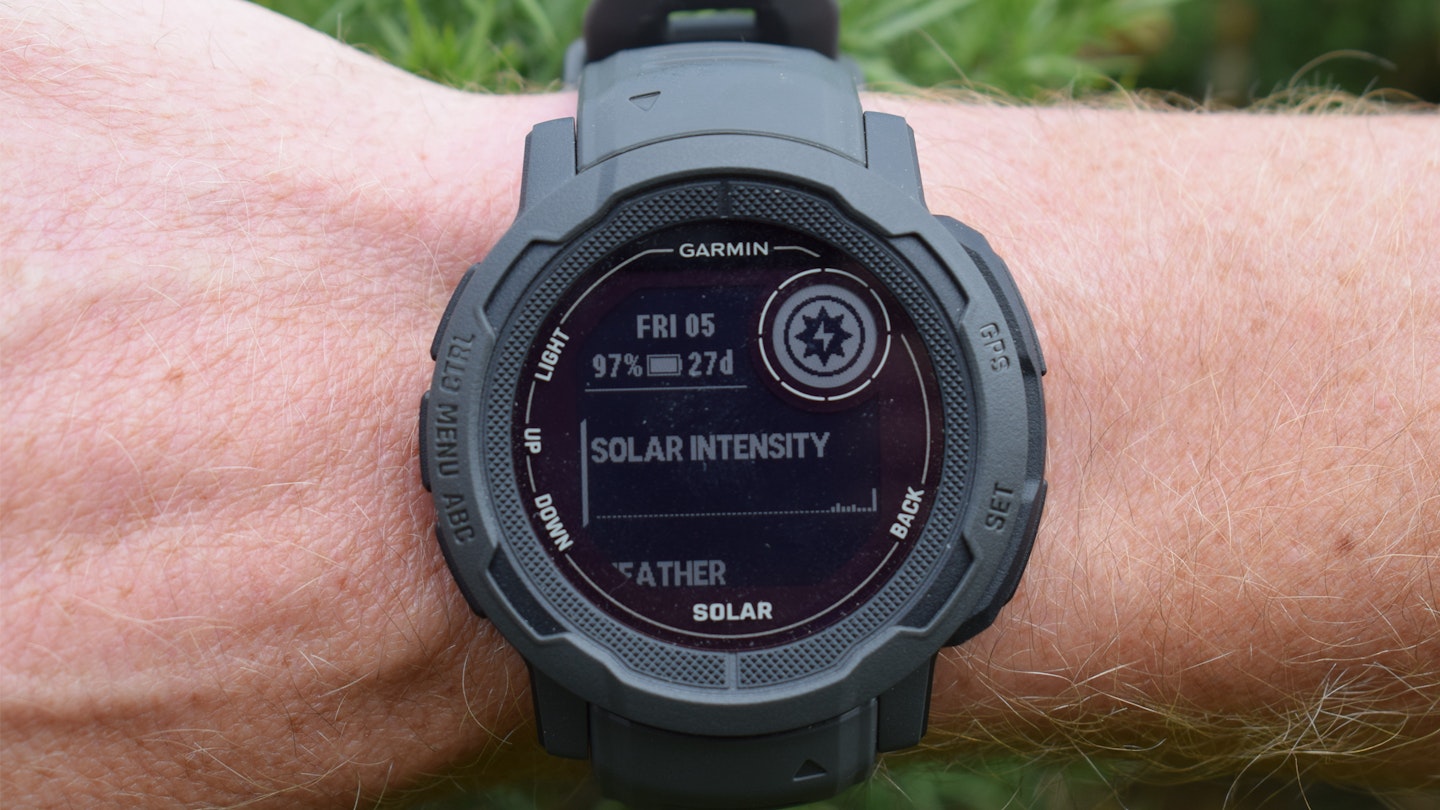
Many runners believe Garmin is the best brand out there, but other brands including Coros, Polar and Suunto are gunning for the top spot in the world of GPS running watches.
Is Garmin better than Coros?
This is all down to personal preference. Garmin is certainly the market leader in the GPS running watch world, with the biggest range and largest market share. But Coros makes excellent watches and is a well-respected brand. Lots of runners are lifelong Garmin fans and will never look elsewhere; others swear by Coros and rate their watches higher than Garmin. Either way, both brands are a safe choice.
What is the best watch to use for running?

This all depends on your needs, preferences and budget, but our top choices are as follows: the Garmin Fenix 7 Pro is the best overall GPS running watch, the Coros Pace 3 is the best ultralight GPS running watch, the Suunto Race is the best value GPS running watch, and the Polar Grit X2 Pro is the best GPS running watch for navigation.
What watch is best for Strava?
All of the watches in our list can be synced with Strava so that your runs are automatically shared on the plaftorm. This means all of our watches – including the Garmin Fenix 7 Pro, Garmin Instinct 2, Coros Pace 3, Coros Vertix 2S, Suunto Race and Polar Grit X2 Pro – are equally the best for Strava.
Are GPS watches any good?
Yes, GPS watches are a superb tool for runners. They are not perfect and have some limitations, but most runners find they help to improve their performance and all-round enjoyment of running.
About the author

James Forrest is a freelance gear tester for Live For The Outdoors and Trail magazine. He's a prolific peak-bagger and wild camper who's climbed hundreds of mountains in the UK and abroad, James gives his gear a serious thrashing on every trip.








